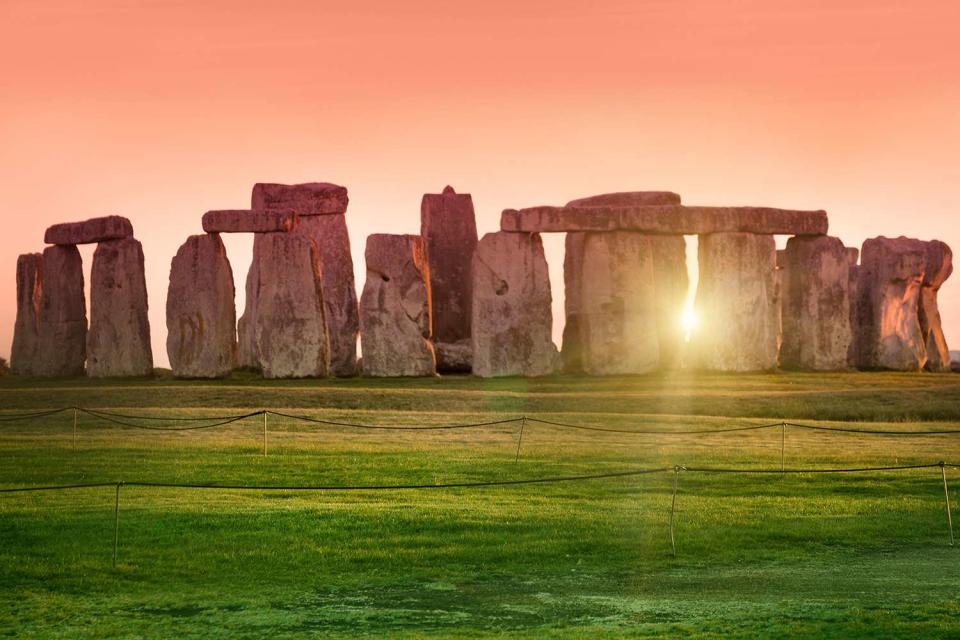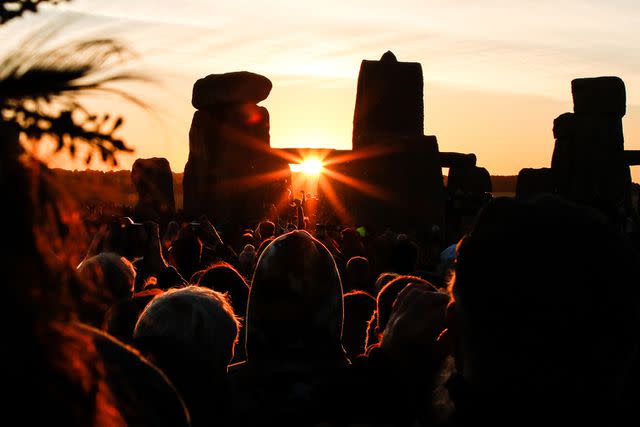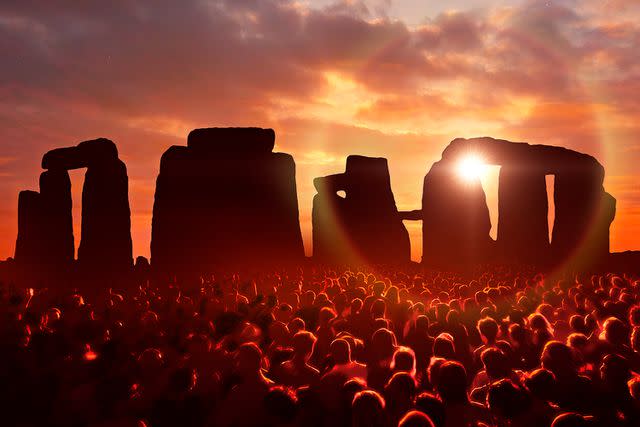All About the 2024 Summer Solstice: What Is It and When Will It Occur?
The summer solstice takes place in mid-June each year in the Northern Hemisphere

nicola margaret/Getty
The prehistoric monument of Stonehenge in EnglandGoodbye darkness and hello sunshine!
The summer solstice marks the official start of longer, brighter days as the Northern Hemisphere transitions out of its long, cold winter and into the highly-anticipated season of sun.
Solstices are one of the two astronomical methods used to determine the seasons on Earth, signifying the start of both summer and winter. Its counterpart are the equinoxes, which mark the beginning of spring and autumn.
For the Northern Hemisphere, the summer solstice kicks off in mid-June each year. Meteorologists and climatologists, meanwhile, use three-month groupings generally based on climate and temperature patterns to track the seasons — with summer, specifically, spanning the months of June, July and August.
While the summer solstice marks the start of the season, it simultaneously marks the longest day of the year. This is because the path of the sun in the sky is the farthest north in the Northern Hemisphere.
In contrast, the Southern Hemisphere is entering the winter solstice at this time. Those who reside below the equator will experience the exact opposite: the least amount of daylight and the shortest day of the year.
As for equinoxes, they mark the time when the day and night are approximately equal in length and take place annually in March and September. The word equinox derives from Latin words "aequi" (meaning equal) and "nox" (meaning night).
Read on for what to know about the 2024 summer solstice, including when it takes place this year and how to celebrate the astronomical event.
Related: A Guide to the Planets in Astrology and What They Mean in Your Birth Chart
When is the summer solstice 2024?

Nick Brundle Photography/Getty
A colorful field of flowers in the countryside.The day the summer solstice takes place depends on geographical location. For the Northern hemisphere, it peaks on June 20 at 4:51 p.m. EDT. For the Southern Hemisphere, it occurs on Dec. 21.
How many hours of daylight is the summer solstice?
The amount of daylight experienced during the summer solstice depends on the latitude in the Northern Hemisphere.
North of the Arctic Circle experiences 24 hours of daylight since the sun remains fully above the horizon. Locations that are at temperate or mid-northern latitudes get approximately 15 hours of daylight, while those at the equator experience around 12 hours of daylight from sunrise to sunset.
The summer solstice happens biannually due to the sun's positioning in relation to the Earth. In the Northern Hemisphere, it falls in June. In the Southern Hemisphere, it takes place in December.
Related: Here's What Mars in Taurus Means for You, Based on Your Zodiac Sign
Why does the summer solstice happen?

paul mansfield photography/Getty
Crowds celebrate the summer solstice at Stonehenge in England in June 2018.The summer solstice is a biannual event that happens in both the Northern and Southern Hemispheres, but at different times due to the sun's positioning in relation to the Earth.
Scientifically, the solstices occur when the Earth reaches the point in its orbit when the North Pole is at its maximum tilt of 23.5 degrees toward the Sun, per The Farmer's Almanac. For the Northern Hemisphere, that's in June. For the Southern Hemisphere, that's in December.
As for us people of Earth, that means those who live north of the equator will experience the longest day and shortest night of the calendar year because the Northern Hemisphere will receive the most direct sunshine.
The term "longest day" has nothing to do with hours, however, it simply equates to the amount of sunlight in effect. The summer solstice is significant because the sun is at its northernmost point in the sky, at which point the Sun’s path does not change for a brief period of time.
Fun fact: The word “solstice” comes from the Latin "solstitium." This breaks down into "sol" (sun) and "stitium" (still or stopped).
Is summer solstice the first day of summer?
While many in the United States consider Memorial Day the unofficial-official start to summer, the summer solstice astronomically marks the first day of the season in the Northern Hemisphere. It lasts from June 20 to Sept. 22, also known as the autumnal equinox.
How to celebrate the summer solstice?

MARK GARLICK/SCIENCE PHOTO LIBRARY/Getty
Illustration of a gathering of people in front of Stonehenge in Wiltshire, UK, at sunset.The summer solstice is celebrated differently around the world through a number of festivities and traditions. Feasts, bonfires, picnics and traditional songs are a few ways the change of season is observed.
Honoring the occasion dates back to ancient times, with some of our earliest ancestors building monuments to commemorate the sun and welcome the arrival of summer. Stonehenge in England, for example, is one of the world's most famous prehistoric monuments. Its entrance faces the rising sun on the day of the summer solstice, which had 18th-century scholars inferring that ancient astronomers might have used it as a type of solar calendar to track sun and moon movement, in addition to change of season.
Thousands of people gather each year to watch the beautiful sight at sunrise and sunset, which will be celebrated the night of June 20 through the morning of June 21 this year. The official English Heritage YouTube channel will be hosting a livestream if you can't make it to Wiltshire in person.
Related: Crowds Gather at Stonehenge to Celebrate Summer Solstice for First Time Since Pandemic Began
Those in the Nordic countries, like Sweden, celebrate the longest day of the year with the joyous holiday called "Midsommar." Traditional celebrations include the dancing the Sma Grodorna (“The Little Frogs”) dance around a maypole adorned with flowers and leaves, while wearing flower wreaths.
Barcelona celebrates the solstice with a bonfire and the carrying of the Canigo Flame. Norway, too, celebrates with a bonfire — in fact, it's the world's largest bonfire called Slinningsbålet.
Parts of the United States, like Alaska, have specific traditions to honor the summer solstice. The residents of Nome, for example, plunge into the Bering Sea for a “polar bear swim" during the multi-day Nome Midnight Sun Festival.
For more People news, make sure to sign up for our newsletter!
Read the original article on People.


